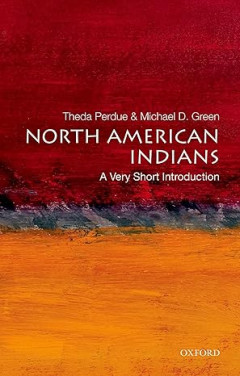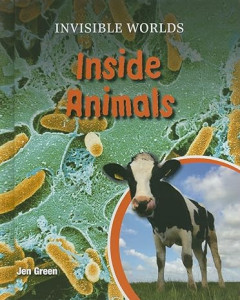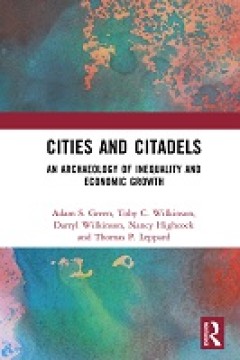Ditapis dengan
E-book Engineering Plastics Handbook
Most of this type are called liquid crystal polymer and have high mechanical strength, particularly, high rigidity even without filling materials because of their self reinforcing property (reinforcing effect similar to filling material derived from the liquid crystal molecular orientation). In addition, some of them have the highest heat resistance among all the thermoplastic resins. The mater…
- Edisi
- -
- ISBN/ISSN
- -
- Deskripsi Fisik
- 68 hlm
- Judul Seri
- -
- No. Panggil
- 668.4 NTN e
E-book Having Too Much : Philosophical Essays on Limitarianism
We are all familiar with the many reasons why we should fight poverty. Poor people do not have enough money to meet their basic needs, are excluded from society, are often not given proper respect, or can become easy prey at the hands of others who want to dominate them. In the domains of both material and immaterial goods, there is a widespread understanding about what it means w…
- Edisi
- -
- ISBN/ISSN
- 9781800649682
- Deskripsi Fisik
- 416 hlm
- Judul Seri
- -
- No. Panggil
- 189 GRE h

E-book North American Indians: A Very Short Introduction
When Europeans first arrived in North America, between five and eight million indigenous people were already living there. But how did they come to be here? What were their agricultural, spiritual, and hunting practices? How did their societies evolve and what challenges do they face today? Eminent historians Theda Perdue and Michael Green begin by describing how nomadic bands of hunter-gather…
- Edisi
- -
- ISBN/ISSN
- 9780195307542
- Deskripsi Fisik
- 161 halaman
- Judul Seri
- -
- No. Panggil
- 970 PER n
E-book Marine Mammals
Marine mammals live in and obtain their food from the sea. But, just like other mammals, marine mammals are warm-blooded; they have lungs and they breathe air. The give birth to living young that are dependent on milk from developed to catch their own food. The structure of a marine mammal is generally the same as that of land mammals; the internal organs and main elements of the skeleton are …
- Edisi
- -
- ISBN/ISSN
- 08020620
- Deskripsi Fisik
- 100 hlm
- Judul Seri
- -
- No. Panggil
- 599.5 INS m

E-book Inside Animals (Invisible Worlds)
Describes the fascinating animal details that are too small for the unaided eye to see, and how these microscopic systems work to keep the animal alive and healthy.
- Edisi
- -
- ISBN/ISSN
- 9780761441953
- Deskripsi Fisik
- 50 halaman, ilus.
- Judul Seri
- -
- No. Panggil
- 573.9 GRE i
E-book Green City Development Guidelines
The Global Green Growth Institute (GGGI) is an international organization dedicated to supporting and promoting strong, inclusive, and sustainable economic growth in developing countries and emerging economies. GGGI interventions are premised on the promise of green growth—a simultaneous advancement of economic growth, environmental sustainability, poverty reduction, and social inclusiveness.…
- Edisi
- -
- ISBN/ISSN
- -
- Deskripsi Fisik
- 36 hlm
- Judul Seri
- -
- No. Panggil
- 712.5 GGG g
E-book Jail Administration : Instructor Manual
This module provides an overview of action planning, including the seven-step action planning process and developing an action plan. Following an instructor demonstration, participants create a written action plan for a non corrections topic. The Action Plan Workbook and end-ofprogram assignment are introduced and explained.
- Edisi
- -
- ISBN/ISSN
- -
- Deskripsi Fisik
- 163 hlm
- Judul Seri
- -
- No. Panggil
- 365 NIC j
E-book International Waters
Aquatic ecosystems face unprecedented threats. Ocean ecosystems are facing multiple pressures, ranging from climate change and acidification to pollution, habitat loss, and excessive fishing. Freshwater ecosystems face multiple stresses. These range from alteration to the hydrological cycle due to climate change to over-abstraction and pollution of surface and groundwater. These stresses threat…
- Edisi
- -
- ISBN/ISSN
- 9781959919001
- Deskripsi Fisik
- 8 halaman
- Judul Seri
- -
- No. Panggil
- 5776 GEF i
E-book Climate Change Mitigation
Climate change is a growing major threat to human and natural systems on our planet. The world must focus on scaling up climate mitigation action that minimizes trade-offs and maximizes synergies with other government economic and development priorities, including protecting nature and promoting an equitable post-pandemic recovery. In this context, the GEF is very well positioned to help accele…
- Edisi
- -
- ISBN/ISSN
- 9781959919025
- Deskripsi Fisik
- 4 halaman, ilus.
- Judul Seri
- -
- No. Panggil
- 551.6 GEF c
E-book Sustainable Cities: for People and Planet
The rapid transformation of the world through urbanization has been a defining feature of the last century. This shift has elevated cities into economic powerhouses that foster innovation, economic development, and social interactions. However, this has come at a cost: often prioritizing immediate economic gains, the fast and unplanned expansion of cities around the world has created a variety …
- Edisi
- -
- ISBN/ISSN
- -
- Deskripsi Fisik
- 18 halaman, ilus.
- Judul Seri
- -
- No. Panggil
- 696 GEF s
E-book Manual on Biodiversity Action Plan for Chilli Production
Diverse cultivation systems like agroforestry, crop rotation and intercropping systems support biodiversity and, in the past, made agriculture a main factor in conserving it. The sustainable agriculture, however, was exchanged in many places of the world by a land use model that segregates agricultural production from areas managed for biodiversity conservation. Thus, favoring monocultures and …
- Edisi
- -
- ISBN/ISSN
- -
- Deskripsi Fisik
- 94 hlm
- Judul Seri
- -
- No. Panggil
- 635.6 GLO m
E-book Rice Ratooning
Rice is cultivated in tropical Asia (South and Southeast Asia) over an area of about 88.7 million ha, with an annual total production of nearly 183.8 million tons of rough rice, an average productivity of 2.7 t/ha (Table 1). Only 14% of the rice area in tropical Asia supports 2 crops of rice per year under irrigation. The remaining riceland is entirely rainfed, with varying water regimes. In ar…
- Edisi
- -
- ISBN/ISSN
- 9711041901
- Deskripsi Fisik
- 288 hlm
- Judul Seri
- -
- No. Panggil
- 664.7 IRR r
E-book Your Guide to Healthy Sleep
Think of your daily activities. Which activity is so important you should devote one-third of your time to doing it? Probably the first things that come to mind are working, spending time with your family, or doing leisure activities. But there’s something else you should be doing about one-third of your time—sleeping. Many people view sleep as merely a “down time” when their brains shu…
- Edisi
- -
- ISBN/ISSN
- -
- Deskripsi Fisik
- 72 hlm
- Judul Seri
- -
- No. Panggil
- 616.84 NHL y

E-Book Cities and Citadels: An Archaeology of Inequality and Economic Growth
Cities and Citadels provides an urgent update of archaeology’s engagement with economic theory. Recent events have forced a major reassessment of economic thinking. In the wake of the 2008 Great Recession and the economic impact of the COVID-19 Pandemic, the world finds itself in unprecedented times. Even though archaeology typically concerns itself with the remote past, it must also help us …
- Edisi
- -
- ISBN/ISSN
- 9781032024851
- Deskripsi Fisik
- 287 halaman
- Judul Seri
- -
- No. Panggil
- 930.1 GRE c
E-book The Global Fund Strategy 2017 - 2022
The Global Fund was designed to evolve to best meet the needs of a changing world context. More than 50 percent of the burden of each of the three diseases and the majority of the world’s poor now live in countries classified by the World Bank as middle income but still varying greatly in terms of quality, access, and capacity of health service provision. Simultaneously, concentrations of dis…
- Edisi
- -
- ISBN/ISSN
- -
- Deskripsi Fisik
- 40 hlm
- Judul Seri
- -
- No. Panggil
- 338.91 THE t
E-book Perry's Chemical Engineer's Handbook
This is the new edition of chemical and process engineers' favorite reference. Previous editions of this authoritative, comprehensive handbook have sold more than 887,000 copies. This Seventh Edition contains 50% new or revised material, including new information on condensers, reboilers, evaporators, and vessels; multicomponent and enhance distillation including azeotropic, extractive, and rea…
- Edisi
- 7th ed.
- ISBN/ISSN
- -
- Deskripsi Fisik
- 2559 hlm
- Judul Seri
- -
- No. Panggil
- 660.01 PER p
E-book Guidebook for International Students
Once you have decided to study in Korea, it is important to collect practical information to begin for preparations. Many international offices of Korean universities and study-abroad organizations provide lots of information on their websites where you can search and acquire such information. The most recent information in Korea, its education system, universities & colleges and education fair…
- Edisi
- 2021 Revised Edition
- ISBN/ISSN
- -
- Deskripsi Fisik
- 98 hlm
- Judul Seri
- -
- No. Panggil
- 910.2 NAT g
E-book Connecting South Asia and Southeast Asia
The success story of economic growth in Southeast Asia over the past few decades is well known. It resulted from an outward-looking strategy of export-oriented growth, coupled with openness to foreign direct investment by more developed economies both within Asia and outside, generally market-friendly policies, and extensive investment in infrastructure. It led to deep economic integration of S…
- Edisi
- -
- ISBN/ISSN
- 978-4-89974-048-3
- Deskripsi Fisik
- 320 hlm
- Judul Seri
- -
- No. Panggil
- 338.9 ASI c
The Anthropocene Reviewed
Sejarah umat manusia adalah catatan besar tentang aneka paradoks. Bagaimana kita bisa sangat welas asih dan sekaligus sangat kejam. Kita begitu pantang menyerah dan sekaligus cepat putus asa. Sedemikian digdaya kita menjelajah ruang angkasa, tapi tak kuasa menyelamatkan sesama dari kelaparan dan peperangan. Dan kenyataan itu dipertajam dan diperluas oleh teknologi digital ketika semua hal parad…
- Edisi
- Cet. 1
- ISBN/ISSN
- 9786024412890
- Deskripsi Fisik
- 360 hlm; 13 x 20,5 cm
- Judul Seri
- -
- No. Panggil
- 128 JOH t
E-book The lord of dynevor
"La-ha-hoo! la-ha-hoo!" Far down the widening valley, and up the wild, picturesque ravine, rang the strange but not unmusical call. It awoke the slumbering echoes of the still place, and a hundred voices seemed to take up the cry, and pass it on as from mouth to mouth. But the boy's quick ears were not to be deceived by the mocking voices of the spirits of solitude, and page 1 / 222 pres…
- Edisi
- -
- ISBN/ISSN
- -
- Deskripsi Fisik
- 222 hlm; 0.4 mb
- Judul Seri
- -
- No. Panggil
- 823 EVE t

Leadership and self-deception : Berpikir di luar kotak
- Edisi
- -
- ISBN/ISSN
- 1576751740
- Deskripsi Fisik
- vii;203 hlm;14x21.5 cm
- Judul Seri
- -
- No. Panggil
- 158 THE l
- Edisi
- -
- ISBN/ISSN
- 1576751740
- Deskripsi Fisik
- vii;203 hlm;14x21.5 cm
- Judul Seri
- -
- No. Panggil
- 158 THE l

WILL GRAYSON, WILL GRAYSON
Pada suatu malam digin, di sudut kota Chicago paling tak disangka, dua orang yang tidak saling mengenal bertemu. Dua remaja bernama sama, dengan teman-teman sangat berbeda, mendadak mengalami perubahan hidup luar biasa, yang berujung pada perubahan hati yang heroik dan pertunjukan musikal paling epik di SMA.
- Edisi
- cet. 1
- ISBN/ISSN
- 978-602-23-1245
- Deskripsi Fisik
- 352 hlm. 13,5 x 20 cm
- Judul Seri
- -
- No. Panggil
- 823 GRE w

APA ADANYA SAJA
- Edisi
- cet. 1
- ISBN/ISSN
- 979-22-1279-5
- Deskripsi Fisik
- 440 hlm;11 x 18 cm
- Judul Seri
- -
- No. Panggil
- 823 GRE a
- Edisi
- cet. 1
- ISBN/ISSN
- 979-22-1279-5
- Deskripsi Fisik
- 440 hlm;11 x 18 cm
- Judul Seri
- -
- No. Panggil
- 823 GRE a

KREATIVITAS DALAM PUBLIC RELATION
- Edisi
- cet. 1
- ISBN/ISSN
- 979-741-173-7
- Deskripsi Fisik
- xi,192 hlm.; illus.;15 x 23 cm
- Judul Seri
- -
- No. Panggil
- 659.2 GRE k
- Edisi
- cet. 1
- ISBN/ISSN
- 979-741-173-7
- Deskripsi Fisik
- xi,192 hlm.; illus.;15 x 23 cm
- Judul Seri
- -
- No. Panggil
- 659.2 GRE k

KEAJAIBAN PUBLIC SPEAKING: Jika tak bisa menjelaskannya, mustahil Anda bisa m…
- Edisi
- cet. 1
- ISBN/ISSN
- 979-20-1676-7
- Deskripsi Fisik
- xviii; 192 hlm; illus;14 x 21 cm
- Judul Seri
- -
- No. Panggil
- 808.5 GRE k
- Edisi
- cet. 1
- ISBN/ISSN
- 979-20-1676-7
- Deskripsi Fisik
- xviii; 192 hlm; illus;14 x 21 cm
- Judul Seri
- -
- No. Panggil
- 808.5 GRE k


 Karya Umum
Karya Umum  Filsafat
Filsafat  Agama
Agama  Ilmu-ilmu Sosial
Ilmu-ilmu Sosial  Bahasa
Bahasa  Ilmu-ilmu Murni
Ilmu-ilmu Murni  Ilmu-ilmu Terapan
Ilmu-ilmu Terapan  Kesenian, Hiburan, dan Olahraga
Kesenian, Hiburan, dan Olahraga  Kesusastraan
Kesusastraan  Geografi dan Sejarah
Geografi dan Sejarah